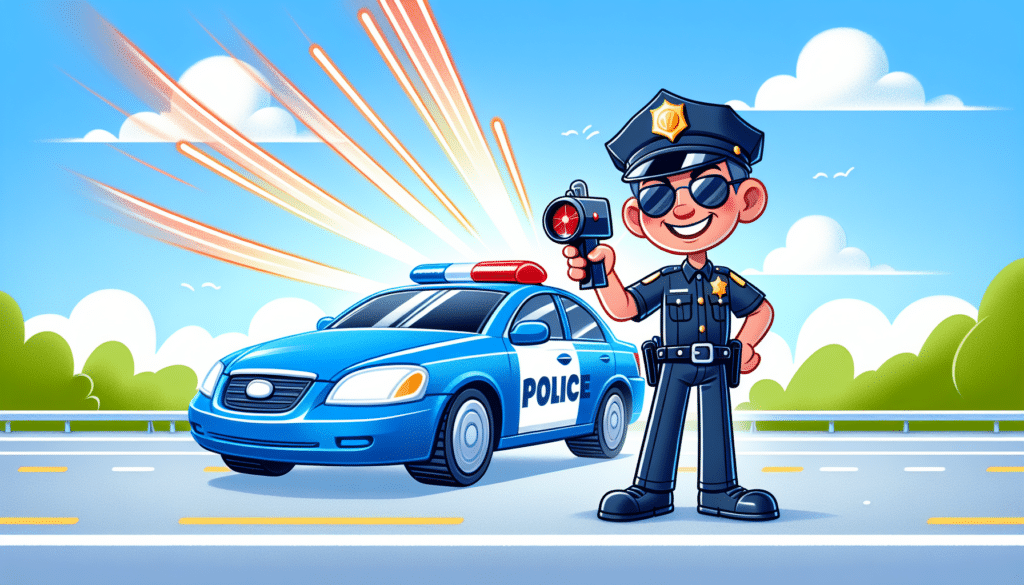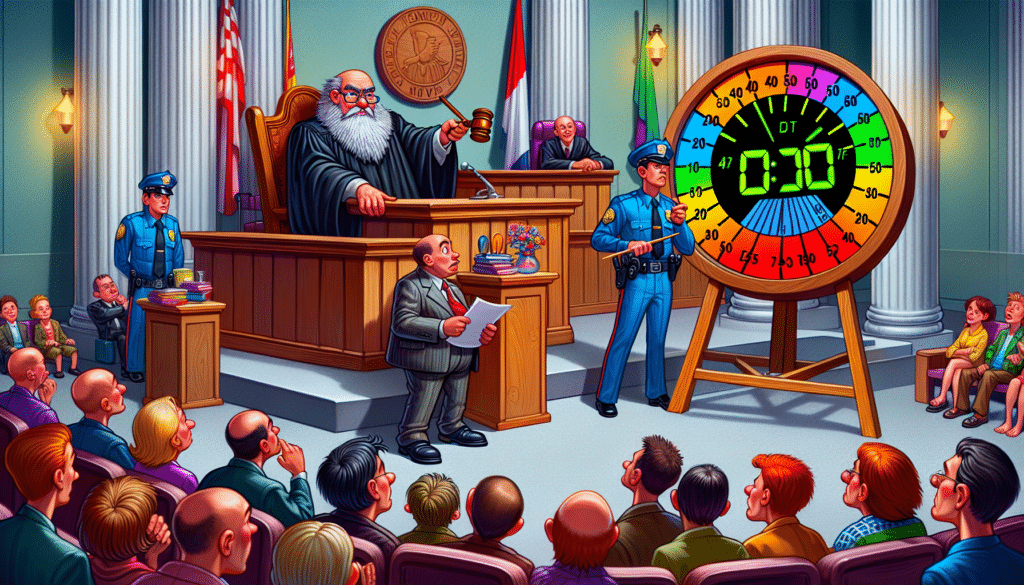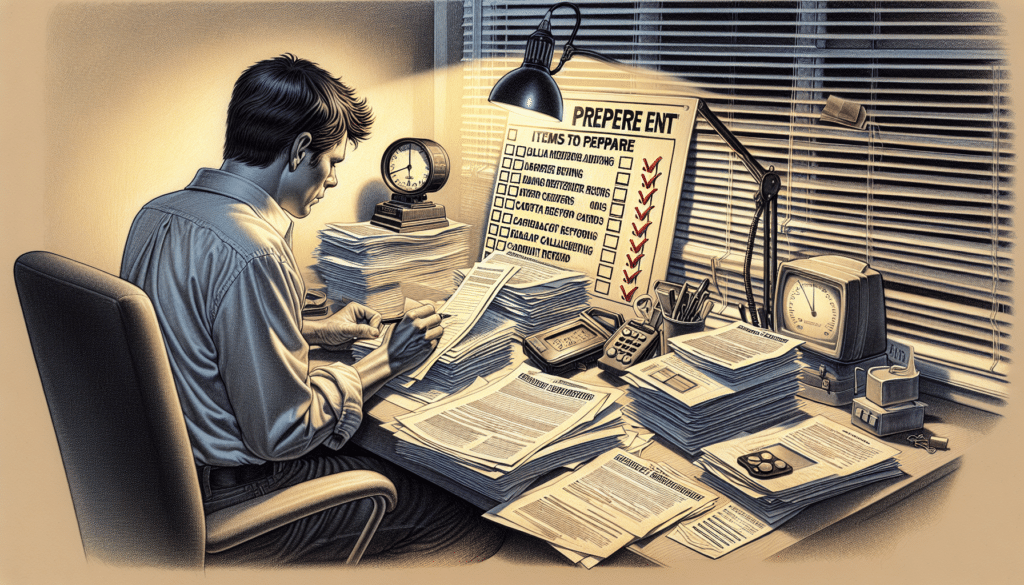Facing a moving radar speeding ticket? This guide will explain how this technology works, potential inaccuracies, and how you can challenge the ticket. Learn key legal defenses, how to gather evidence, and prepare for court effectively.
Key Takeaways
Moving radar technology allows police to measure vehicle speeds while in motion, utilizing instant-on and constant-on modes for effective speed enforcement.
Accuracy of radar readings can be questioned due to environmental factors, operator errors, and radar calibration issues, providing grounds for challenging speeding tickets.
Preparing for traffic court involves gathering evidence, understanding court procedures, and considering plea bargains to enhance the chances of having a speeding ticket dismissed.
Understanding Moving Radar Speeding Tickets

Moving radar speeding tickets are issued when law enforcement officers use police radar guns to measure and record the speed of vehicles while their patrol car is in motion. This technology allows officers to monitor traffic speeds continuously and issue tickets on the spot without stopping the vehicle.
Knowing how this system operates and the various types of radar equipment can help in forming a defense against these tickets.
What is Moving Radar?
Moving radar technology allows police to measure vehicle’s speed while their patrol car is in motion, detecting speeds from distances often exceeding 3500 feet. It emits radio waves that bounce off moving vehicles and return to the radar unit, which then calculates the speed based on the frequency change. Additionally, speed measurement devices enhance the accuracy of these readings.
Instant-on police radar, a common type used in moving radar systems, operates in RF-hold mode. This means the radar remains on standby until the officer activates it to measure speed. Such systems can catch speeding drivers off guard, as the radar signal isn’t constantly active, making it harder to detect.
How Police Officers Use Moving Radar
Police officers operate moving radar to enforce posted speed limit while driving, enabling them to monitor speeds without stopping their vehicle. A police officer can either constantly transmit or be used in an instant-on mode, allowing officers to adapt their speed enforcement tactics to various traffic conditions.
Constant-on radar continuously emits signals, showing speeds above a set threshold, which helps officers focus on serious speeders. Instant-on radar remains undetectable until activated, effectively catching unsuspecting drivers. Officers set speed thresholds and detection ranges, commonly under 1000 feet, to ensure accurate speed readings.
Officers must visually identify the fastest vehicle when using radar on multiple vehicles, ensuring the correct vehicle is ticketed, particularly in high-traffic areas. Unmarked vehicles make it harder for drivers to know when they are being monitored, adding another challenge for those trying to avoid speeding tickets.
Types of Moving Radar Systems
There are various types of moving radar systems used by police for speed enforcement. A common type is the dual-antenna radar system, enabling officers to measure vehicle speeds from both the front and rear. These systems can have dual transmitters, making them highly effective in monitoring traffic from multiple angles.
Constant-on radar systems continuously emit signals, detecting speeds as vehicles enter their range, thus providing comprehensive coverage and continuous monitoring to ensure no speeder goes unnoticed. This type of radar equipment is particularly useful in areas with heavy traffic, where constant vigilance is required.
Accuracy and Limitations of Moving Radar

While moving radar systems are generally accurate, they do have limitations that can affect their reliability. Most police radar devices can achieve an accuracy of about ±1 mph under ideal conditions. However, factors like environmental conditions and the target vehicle’s speed can influence accuracy.
Understanding these limitations is key to challenging a radar speeding ticket effectively.
Factors Affecting Radar Readings
Environmental factors like rain or fog can interfere with radar signals, causing inaccurate speed readings. Dense traffic can also complicate the ability of radar to track a specific vehicle, often resulting in the detection of a different vehicle with each radar update. This makes it challenging for officers to accurately determine the speed of one particular vehicle in heavy traffic conditions.
Additionally, an officer’s lack of proper training on radar use can lead to user errors that affect the speed reading. Shadowing can occur when another vehicle or object obstructs the radar signal, impacting the accuracy of the speed measurement.
Proving the officer was untrained or uncertified to operate the radar device can be a valid argument in contesting a speeding ticket.
Common Radar Errors
Common errors associated with radar use can lead to incorrect speed readings. One such error, the cosine effect, happens when the radar beam isn’t aligned directly with the direction of motion. This misalignment can result in underreported speeds, as the radar gun calculates a speed lower than the actual one. User mistakes, such as improper aiming or lack of training, can also lead to incorrect speed readings by the radar equipment.
Though radar gun evidence is generally reliable, it can be challenged based on factors like improper calibration or officer errors. Expert witnesses can testify on radar technology’s limitations, demonstrating inaccuracies in speed readings. This testimony can be crucial in disputing the accuracy of radar results in traffic court.
Legal Defenses Against Moving Radar Speeding Tickets

When facing a moving radar speeding ticket, several legal defenses can be employed to challenge the citation. These defenses can be based on questioning the accuracy of the radar reading, proving operator error, or using expert witnesses to testify about the limitations of radar technology.
Each of these strategies can be effective in building a strong defense against a speeding ticket.
Challenging Radar Gun Calibration
One of the most effective ways to challenge a speeding ticket is by questioning the calibration of the radar gun. Calibration methods can vary, and improper calibration can result in inaccurate speed measurements. Maintenance records provide evidence that the radar gun was functioning properly at the time of the ticketing. Requesting these records can help demonstrate calibration and maintenance issues, strengthening your defense against a speeding ticket.
Challenging the calibration of the radar gun is crucial because incorrect readings can lead to unjust speeding tickets. By demonstrating that the radar gun was not properly calibrated, you can cast doubt on the accuracy of the speed reading and potentially have the ticket dismissed.
Proving Operator Error
Another defense strategy is to prove operator error. Demonstrating that the officer failed to correctly operate the radar device can potentially invalidate the speeding ticket. This can include showing that the officer was not properly trained or certified to use the radar equipment, or that they did not follow the correct procedures when using the radar gun.
By highlighting these errors, you can argue that the speed reading was not reliable, and therefore, the ticket should be dismissed. This approach requires a thorough understanding of how radar devices should be operated and the specific circumstances of your case.
Using Expert Witnesses
Expert witnesses can play a critical role in disputing the accuracy of radar readings in court. These witnesses can provide testimony on the reliability of radar technology, potentially influencing the case outcome. They can also explain the technical aspects of radar technology, helping to establish doubt about the accuracy of the readings.
Expert witnesses familiar with radar technology can testify about the equipment’s accuracy and proper usage protocols. Their insights can be invaluable in demonstrating the limitations of radar technology and supporting your defense in traffic court.
Preparing for Traffic Court

Preparing for traffic court is essential if you plan to contest a speeding ticket. This means knowing your rights, gathering evidence, and being familiar with court procedures. Being well-prepared can significantly influence the outcome of your case and increase your chances of having the ticket dismissed.
Gathering Evidence
Presenting evidence of the conditions during the radar reading can support your legal defense. Witness statements, photos, or recordings can strengthen your case during the trial. Clearly organizing evidence helps the judge understand your argument during the hearing.
Court preparation includes understanding your case, being organized, and presenting evidence effectively. Gathering all relevant paperwork, including the ticket and court documents, is essential for effective preparation. Knowing the courtroom’s rules for evidence presentation is crucial for a successful defense.
Understanding Court Procedures
Traffic court trials are presided over by a judge, and there are no juries involved in the decision-making process. Knowing the procedures of traffic court can help you navigate the hearing smoothly. Developing a structured argument before your court appearance enhances your ability to communicate effectively with the judge.
Understanding your rights and the specific laws governing traffic trials in your state can significantly influence your court experience. To contest a traffic ticket, you must plead not guilty and request a trial by the due date indicated on your ticket.
Plea Bargaining Options
Negotiating with the prosecutor can result in a lesser charge or reduced penalties in some cases. Plea negotiations may allow you to reduce the charges or penalties associated with your traffic violation. This can provide an alternative to contesting the speeding ticket in court.
A legal representative can facilitate plea bargaining, potentially leading to more favorable outcomes. Exploring plea bargaining options can be beneficial in managing the consequences of a traffic violation.
Preventative Measures to Avoid Speeding Tickets

To avoid the hassle of dealing with speeding tickets, it’s important to adopt preventative measures. This includes using radar detectors, practicing safe driving techniques, and considering legal alternatives to radar jammers.
Being proactive can significantly reduce your chances of receiving a speeding ticket.
Using Radar Detectors
Radar detectors can be a good investment, detecting radar signals and alerting drivers, thus reducing the risk of speeding tickets. Using a good radar detector and familiarizing yourself with its alerts maximizes chances of avoiding a speeding ticket.
A radar detector must be sensitive and quick to effectively detect quick-trigger radar. K-band is a common radar frequency in North America. Radar detectors alert drivers about different enforcement methods, including police radar, police lidar, and automated photo enforcement systems.
The Whistler CR97 is an effective, budget-priced radar detector. Using a radar detector is recommended to help avoid speeding tickets.
Safe Driving Techniques
Cruise control helps maintain a consistent speed and prevents unintentional speeding. Leaving earlier can reduce the pressure to speed. Awareness of personal triggers like stress or anger can help drivers avoid speeding.
Allowing extra time to reach destinations can alleviate stress that leads to speeding. Cruise control can help maintain consistent speeds and reduce unintentional speeding.
Legal Alternatives to Radar Jammers
While radar jammers are illegal in many regions, there are legal alternatives that can help you avoid speeding tickets. Advanced radar detectors paired with anti-laser coatings can reduce the chances of being detected by police lidar, adding an extra layer of protection.
These legal alternatives help you stay within the law while defending against speed enforcement measures.
Summary
Dealing with a moving radar speeding ticket can be daunting, but understanding the technology behind police radar and the common errors that can occur can give you a significant advantage in court. By questioning the calibration of the radar gun, demonstrating operator error, and using expert witnesses, you can build a strong defense and potentially have your ticket dismissed.
In addition, taking preventative measures such as using radar detectors and practicing safe driving techniques can help you avoid getting speeding tickets in the first place. Remember, knowledge is power, and by being informed and prepared, you can take control of your driving destiny and keep your record clean.
Frequently Asked Questions
What is moving radar and how does it work?
Moving radar is a technology employed by law enforcement to measure the speed of vehicles while in motion. It operates by emitting radio waves that reflect off moving vehicles, allowing the radar unit to calculate speed through the frequency change in the returned waves.
Can environmental conditions affect radar readings?
Environmental conditions, such as inclement weather and dense traffic, can adversely affect radar readings by reducing their reliability and leading to inaccurate speed measurements. It is essential to consider these factors for precise data interpretation.
How can I challenge a radar speeding ticket in court?
To effectively challenge a radar speeding ticket in court, focus on questioning the calibration of the radar gun and establishing potential operator error. Engaging expert witnesses to discuss the limitations of radar technology can also strengthen your case.
What are some safe driving techniques to avoid speeding tickets?
To avoid speeding tickets, consistently use cruise control to maintain a steady speed and allow ample time for travel to reduce stress while driving. Being mindful of triggers that may cause you to speed is also essential.
Are there legal alternatives to radar jammers?
Yes, advanced radar detectors combined with anti-laser coatings serve as a legal alternative to radar jammers by minimizing detection by police lidar. This option allows for greater awareness while remaining compliant with the law.




